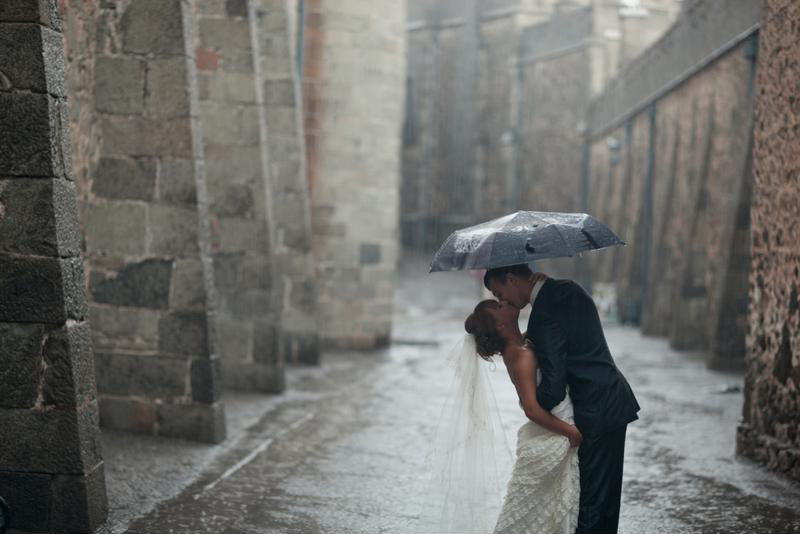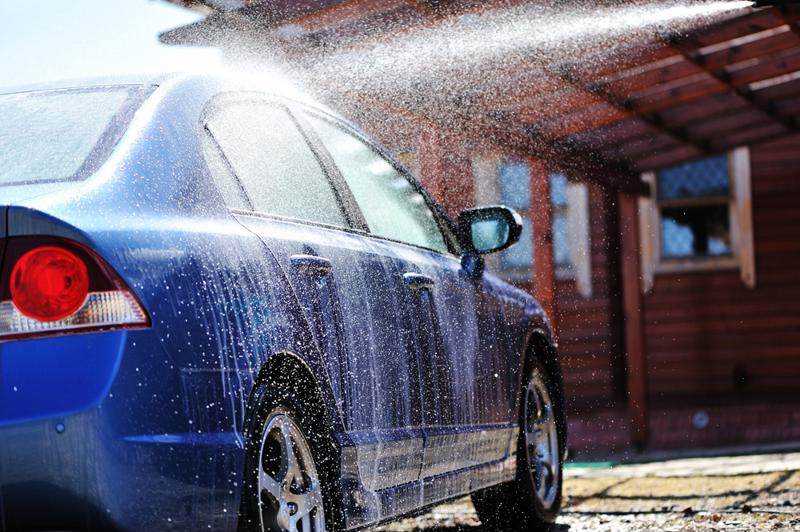Spring showers bring May flowers, but they can also bring a whole lot of damage to your vehicle. Everyone knows the harm snow and ice can do to their cars, but many people don't consider the effects of rain. The excess moisture can degrade paint jobs and cause mold to grow if water leaks inside the vehicle, so it's a good idea to know what to do to keep your car in top shape, despite any showers.
Follow these tips to make sure your car is high and dry this season.
1. Rain, rinse, repeat
There's a new mantra you should adopt this season: When it rains, get a car wash. Now, it may not be economical to head to the car wash after every little shower, but if there's a big rainstorm it's vital to make your way over there as soon as possible. According to Auto Detail Doctor, one of the most important times to wash your car is immediately after it rains. Contrary to popular belief, rain is not giving you a free car wash by clearing away dirt and grime on your car – it's actually adding more pollutant-filled soot and sediment to your car's surface. The contaminants in this caked-on layer of yuck actually wear away at your paint job, and a professional scrub can help clear away all this nastiness. At the very least, give your car a rinse in the driveway.
 "Shoot, did I leave the windows open in the limo?" is all this guy is thinking right now.
"Shoot, did I leave the windows open in the limo?" is all this guy is thinking right now. 2. Close your windows
This one might seem obvious, but how many times have you walked out to your car after a rainstorm to realize you left the windows open the whole time? Everyone's been there. If water leaks into your car's interior, it can damage the fabric and cause a buildup of mold. This spring, make it a habit of always shutting your car windows, especially if rain is on the forecast. Don't forget about closing sunroofs and rear windows, too.
3. Target moisture
If the last tip failed to make an impression on you and you find yourself staring at an inch of water on the floorboards and spongy seats, it's time to get serious about drying out your vehicle. This is a multi-step process. If you've got an inch or more of standing water on the floor of your car, NAPA recommended using a wet/dry vac to suck out as much of it as you can, followed by using thick cloth towels to absorb any water that collected on seats or carpets.
Next, NAPA suggests using heavy airflow to dry out the interior of the vehicle. Open all doors and windows and then place a large fan on the ground near the car, setting it at an angle so that the air blows through the inside of the car. It's most effective to do this drying-out procedure inside your garage and letting the car sit for at least a day. If you're pressed for time or on the road, NAPA noted that you can also use your car's heater to dry out the vehicle, but it's less efficient and should only be used as a temporary solution. Finally, spot-dry any remaining damp areas with a blow dryer.
 Getting a car wash after a rainstorm helps remove harmful contaminants.
Getting a car wash after a rainstorm helps remove harmful contaminants. 4. Out, dang spot
Getting a car wash immediately after a rainstorm will help prevent most waterspots and paint damage, but if you live in an area where the rain is more acidic, it could be a good idea to invest in a paint cleanser. The product will decontaminate the surface of the car's exterior to prevent damage from the rain, explained Dr. Beasley's. Use the paint cleanser after getting a car wash for best results – it removes extra grime and helps protect your car against the next downpour.



